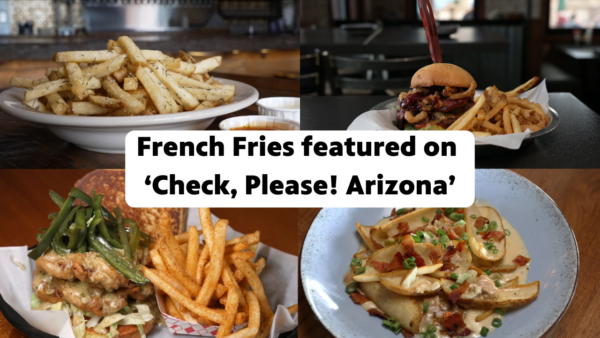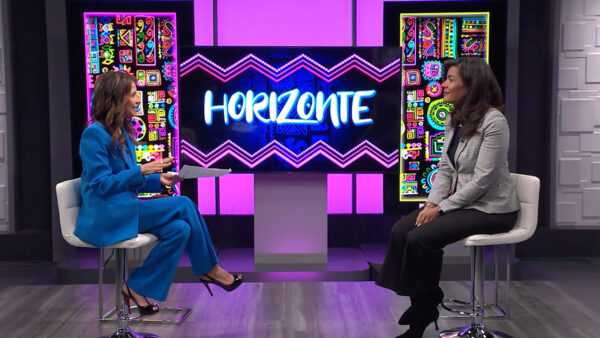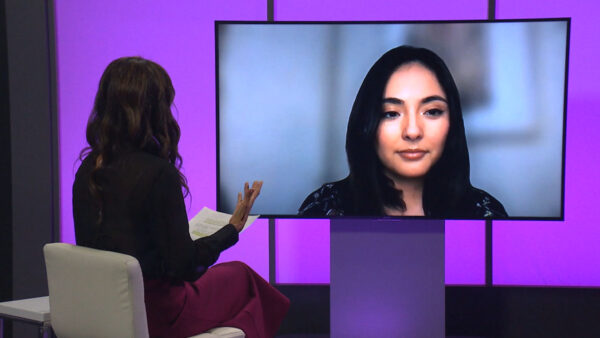Get Covered America, is a nonpartisan campaign of Enroll America focused on engaging people about the new health insurance available under the Affordable Care Act (ACA). Pati Urias, Communications Lead for Arizona Enroll America, talks about the campaign.
José Cárdenas: Enrollment begins October 1st in Arizona's Expanded Medicaid Program and the Online Insurance Marketplace. Enroll America is an effort to enroll Arizonans into health insurance coverage under the Affordable Care Act. This nonprofit group is working with local health care and social service agencies to answer questions about the federal health care overhaul. Here with me tonight is Pati Urias, the communications lead for Enroll America in Arizona. Thank you for joining us on "Horizonte." This is the big topic of the day in part because of budget battles in Washington where the issue seems to be whether or not Obama care will be funded. It looks like it will and it will go forward. What are you doing to make sure that people get advantages promised under the Affordable Care Act?
Pati Urias: We're mounting a grass roots effort. We are knocking on doors. Meeting people where they meet, whether at farmers markets, college campuses, for example U of A or ASU, different places around Arizona to get in touch with people who may be uninsured, part of the one million people uninsured across Arizona that we need to reach to let them know that even though you don't have insurance now, your options are now available to you online, if you go through the marketplace which is being run by the federal government here in Arizona. And what they can do is we can put them in touch with a good chunk of our role is to primarily educate and put people in touch with certified application counselors, or navigators, who can help them sort through what needs they have in terms of health insurance, and navigate the system. Things they don't know or don't understand or questions that they don't understand that they need to ask that will help them choose a plan that will suit them and their families.
José Cárdenas: Give me a sense for the time periods. We keep hearing about October 1st. What happens on October 1st?
Pati Urias: October 1st is the opening date. It is by no means a deadline at all. People who decide that they want to take a look into the marketplace, the open marketplace, have until December 15th to enroll in a plan, if they want to be covered by the 1st of January. The marketplace itself will be open until March 31st. So, October 1st is by no means a deadline. It is the start of something that we're calling historic and people who, for example, may have been turned down for insurance before. Perhaps they've had cancer or another diagnosis. We have heard of one diagnosis of acne that prevented one person from getting coverage, prevented that one person from getting treatment for another disease. People who fall under that category will no longer be denied health coverage. They can explore new options under the marketplace.
José Cárdenas: The real focus, the one million people uninsured. What are you doing to reach out to them? How do you get the word out?
Pati Urias: We have volunteers, we have staff members who have organized in a very grass roots type of way to knock on those doors and hand people information, ask them if they're uninsured. And let them know the marketplace is opening up on October 1st. If you are not satisfied with the insurance coverage that you have now, this is a really good opportunity for you to take a look at the open marketplace and see if there is another type of plan that would suit your needs. Or maybe you haven't been able to get coverage. Maybe you didn't understand that you may be one of the 90% that could qualify for some type of subsidy or some type of tax benefit as a result of enrolling in the marketplace. We're trying to be very, very basic with the information and let them know where they can go to explore these options.
José Cárdenas: As I understand it, part of the promise of the Affordable Care Act is not simply that there will be insurance coverage, but as the title implies, it will be affordable. Do the materials that you provide explain how that all works? It is somewhat complicated, isn't it? A function of premiums and tax credits and so forth. How do you explain all of that?
Pati Urias: It is a lot to digest for a lot of people. A lot of confusion, misunderstandings. People don't understand what does it mean? What do I do? How do I get there? What we're trying to do is provide them with very, very basic information so that we can drive them to specific web sites, such as healthcare.GOV, and our web site for the campaign which is called getcoveredamerica.org. Those types of places where they can see -- get a hands-on look as to what it is going to offer. There are also some demonstration videos that the Department of Health and Human Services has put out on the YouTube channel.
José Cárdenas: I have seen a couple of those. It is like walking you through step by step how you apply, what are the kinds of questions, how -- what the qualification criterion are and so forth.
Pati Urias: We want to make sure that people understand that it will not be very intimidating. It will be very simple. For example, someone who is looking for an airline flight or maybe a hotel room somewhere on one of the many web sites that will do a search engine for you. In some respects, it will be as simple as that. So, we want people to know that even if you have coverage now, if it is not really quite meeting your needs, you can explore what new options are out there. If you want to take a look once the marketplace opens and gives you a better idea, better perspective of the types of rates you can expect to pay, what types of subsidies you may be eligible for or what types of tax credits that your family may qualify for.
José Cárdenas: Of what particular significance is all of this to the Latino community in Arizona?
Pati Urias: What we know from the statistics nationwide, of the eligible uninsured across the country, 25% of those are Latino. Here in Arizona, we have far more than that. Of the one million uninsured in Arizona, it's 39% of the population. That's our estimate. We really do need to reach, in particular, young Latinos. Maybe to 18 to 35 year olds who don't really know that there is an option that is coming their way.
José Cárdenas: How are you doing that? What special outreach efforts are you making?
Pati Urias: We are meeting with a lot of our partners in the community, health care organizations that are also familiar with population. We are talking with media outlets. We are out and about in the community trying to get to people, where they meet, farmers markets I was mentioning, places where people shop, where people gather, to get them this information.
José Cárdenas: We did put the web site and the phone number on the screen. One last question. What about the predominantly Spanish-speaking people who might be eligible for this. What are you doing for them?
Pati Urias: We have volunteers who do speak Spanish for people who are more comfortable speaking Spanish. We also do have materials available in Spanish. And we are doing a lot of outreach efforts across the country with community groups that reach out to the Latino community.
José Cárdenas: Well it is a very important subject. I'm sure there is a lot more work to be done. Thank you so much, Pati, for joining us to talk about Enroll America.
Pati Urias: Thank you.
Pati Urias:Communications Lead, Arizona Enroll America























